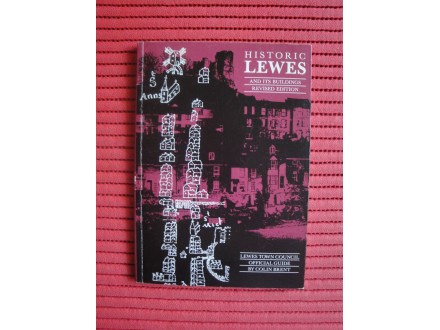Historic Lewes and its buildings
| Cena: |
| Želi ovaj predmet: | 2 |
| Stanje: | Polovan bez oštećenja |
| Garancija: | Ne |
| Isporuka: | Pošta Post Express Lično preuzimanje |
| Plaćanje: | Tekući račun (pre slanja) Pouzećem Lično |
| Grad: |
Beograd-Čukarica, Beograd-Čukarica |
Godina izdanja: Ostalo
ISBN: Ostalo
Oblast: Arhitektura
Jezik: Engleski
Autor: Strani
Historic Lewes and its buildings
Lewes Town Council official guide, 1985. godine na 54. strane, ilustrovano.
Knjiga je odlicno ocuvana.
Lewes (/ˈluːɪs/) is the county town of East Sussex, England. It is the police and judicial centre for all of Sussex and is home to Sussex Police, East Sussex Fire & Rescue Service, Lewes Crown Court and HMP Lewes. The civil parish is the centre of the Lewes local government district and the seat of East Sussex County Council at East Sussex County Hall.
A traditional market town and centre of communications, in 1264 it was the site of the Battle of Lewes. The town`s landmarks include Lewes Castle, Lewes Priory, Bull House (the former home of Thomas Paine), Southover Grange and public gardens, and a 16th-century timber-framed Wealden hall house known as Anne of Cleves House. Other notable features of the area include the Glyndebourne festival, the Lewes Bonfire celebrations and the Lewes Pound.
Lewes is located at the point where the River Ouse flows through a narrow gap in the east-west line of the South Downs. The immense strategic value of the site, which is able to command traffic between the Channel coast and the Sussex interior, was recognised as early as the Iron Age, when a hill-fort was built on Mount Caburn, the steep-sided hill that overlooks the Ouse (and the modern town of Lewes) from the east.
By the ninth century, the Kingdom of Sussex had been annexed to the Kingdom of Wessex, and in 838 Ecgberht, King of Wessex donated the estate of Malling, on the opposite side of the Ouse from Lewes, to the Archbishop of Canterbury. As a result the Parish of Malling became a `peculiar`, which means that the parish was directly subject to the Archbishop of Canterbury rather than the Bishop of Chichester like every other parish in Sussex. Malling would retain this anomalous status until as late as 1845.
Ne saljem van Srbije.
Zbog visoke cene provizije post expresa predlazem da prethodno uplatite novac na ziro racun, dok cu vam knjigu poslati post expresom kome cete platiti samo postarinu.
Sada je prosecna postarina post expresa 500 dinara pa navise.
Postarina postom kao tiskovina je oko 240 dinara.
Predmet: 67408029











